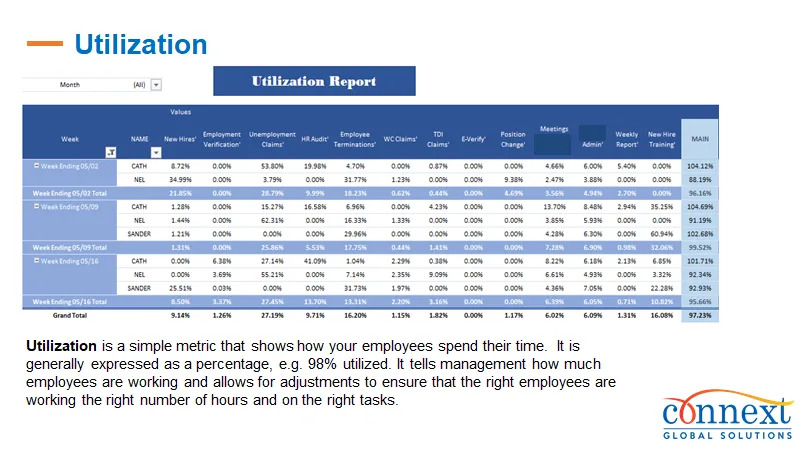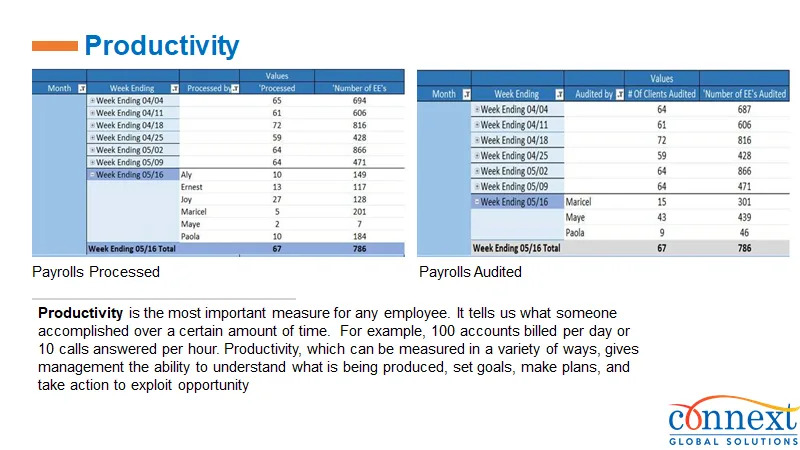Key Summary
- Organizations often switch BPO providers to address operational gaps created by hiring freezes, budget limits, or capacity constraints.
- Traditional hiring can be slow, especially for specialized roles, making outsourced staffing a faster way to access talent and maintain service levels.
- A headcount-neutral outsourcing model, using independent contractor agreements, allows teams to expand capacity without increasing formal employee numbers.
- Benefits extend beyond cost savings, including faster scaling, operational flexibility, better alignment with internal systems, and reduced administrative burden.
- Effective BPO transitions require clear definition of scope, expected outcomes, and success measures, along with cultural and technology alignment, phased implementation, and risk management.
- Long-term value comes from improved agility, service consistency, access to specialized skills, and operational resilience rather than short-term cost reduction.
- Connext supports organizations through BPO transitions with compliant, flexible, and transparent solutions, helping clients maintain continuity, strengthen teams, and achieve strategic business objectives.
In many organizations today the business environment is marked by competing pressures: growth targets, customer expectations, digital transformation, and resource constraints. The demand for talent, service delivery, and digital operations continues to rise, while hiring freezes or budget controls keep employee numbers flat.
That tension often slows projects, strains teams, and affects service levels. The result is a backlog of work and missed opportunities.
Switching BPO partners, or reframing the way you engage outsourced staffing, is a viable route through this friction. It offers a way to expand capacity, add skills, and maintain service levels without changing your formal employee count.
This article explores why organizations make this move, what a BPO transition involves, and how to manage the shift effectively.
Why Organizations Switch BPOs
When hiring freezes create operational friction
A hiring freeze can stabilize costs but often creates operational gaps. Departments that depend on headcount growth, such as customer service, finance, or IT support, quickly feel the pressure. Tasks accumulate, response times lengthen, and the internal team becomes overstretched.
Outsourcing becomes a practical way to sustain delivery. By engaging external partners, organizations can meet growing workload demands without increasing employee headcount.
When traditional hiring can’t keep up
Recruiting new staff takes time. Finding, screening, and onboarding employees can take months, especially for specialized roles. Many firms now turn to BPO partners for faster access to talent and capacity.
Outsourcing providers can deploy trained professionals more quickly than internal hiring, reducing lag time and giving leaders flexibility to adapt to new business needs.
When the current BPO vendor no longer fits
A BPO relationship should evolve with the organization. When the current provider struggles to scale, integrate, or innovate, operations can stall. High turnover, rigid contracts, or limited transparency often signal that a change is needed.
A new BPO partner offering independent contractor outsourcing or headcount-neutral staffing can provide the agility and compliance framework required to keep operations moving.
A Headcount-Neutral Outsourcing Model
What switching BPOs involves
A BPO vendor change involves transferring specific business processes, or even whole teams, from one provider to another. Some organizations also use the transition to redesign their outsourcing model.
A headcount-neutral approach allows the organization to bring in talent under independent contractor agreements managed through the vendor. The company gains capacity and skill but stays within existing headcount limits.
As Connext explains, many organizations are now advancing business goals during hiring freezes through flexible offshore staffing models that maintain compliance and control.
Advantages beyond cost
Cost reduction is often part of the discussion, but the advantages extend far beyond savings. Recent data reinforces this shift in priorities. As of 2024, only 34% of organizations cite cost savings as the primary reason for outsourcing, down from 70% four years ago. The trend highlights a broader focus on flexibility, capability, and speed rather than purely on lower pricing.
When the model delivers best results
A headcount-neutral outsourcing model fits well when:
- Business processes are clearly defined and measurable.
- The internal team faces hiring limits but needs more capacity.
- The partner offers compliant, independent-contractor structures.
- The organization has a plan for gradual transition and knowledge transfer.
Managing a Successful Outsourcing Transition
Successfully switching BPO providers requires more than selecting a new vendor. Key considerations include:
Clarify scope and outcomes
Define what will be outsourced, expected volumes, service standards, and reporting requirements. Internal alignment is essential before the transition begins.
Assess integration and culture fit
A partner should blend into your organization’s systems, workflows, and culture. Technology compatibility, communication style, and shared values all influence long-term success.
Manage transition risk
Service disruption, knowledge transfer gaps, or misaligned processes can occur. Mitigate through phased implementation, overlap between providers, and KPI monitoring.
Ensure compliance and maintain neutrality
Independent contractor agreements must comply with labor, tax, and data regulations. Connext ensures each engagement follows compliant structures so clients can scale quickly without legal or HR exposure.
Strengthen communication and alignment
Teams need to understand why a vendor change is happening and how it supports business goals. Clear communication reduces uncertainty and ensures cooperation during transition.
Evaluate total value
Assess more than price. The right vendor strengthens resilience, delivers measurable results, and allows teams to focus on strategic work. Sustainable outsourcing relies on long-term operational value, not short-term cost reduction.
As Connext emphasizes, sustainable outsourcing relies on long-term operational value, not short-term cost reduction.
Conclusion
Switching BPOs can be a turning point for organizations limited by hiring freezes or headcount caps. A well-planned transition opens access to specialized talent, improves service consistency, and enables growth without increasing payroll.
The key is preparation—defining scope, selecting the right partner, and managing a careful transition plan. When those elements align, outsourcing becomes a lever for resilience and agility.
Organizations that approach the process thoughtfully often emerge with stronger systems, better governance, and renewed focus on core priorities.
For organizations facing hiring limitations, a headcount-neutral outsourcing approach provides a practical way to maintain and expand operations.
Discover why outsourced staffing outpaces traditional hiring and how it can help you scale faster, access top talent, and maintain operational flexibility.
Connext helps organizations plan outsourcing transitions, evaluate vendor options, and deploy independent-contractor teams that expand operations without increasing headcount: read full article here.
FAQs
Yes. Independent contractor agreements let organizations expand teams while staying headcount-neutral.
Cost is a factor, but most organizations prioritize speed, access to talent, and operational flexibility.
isks include service disruption, knowledge gaps, and cultural misalignment, which can be minimized through phased transitions and clear communication.
Capacity is added via independent contractors managed by the provider, maintaining flexibility without increasing permanent staff.
Success comes from clear objectives, technology and culture alignment, phased implementation, and compliance. Connext supports organizations through the process to ensure continuity and long-term value.









